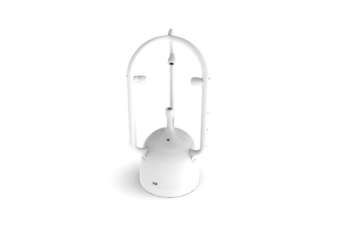Climate Change
Anemometer Project

This project developed a new low-cost air-flow sensor, or anemometer, to identify the actual flow of air in rooms and in ducts. These anemometers can assist in early detection of operational issues and can help optimize the performance to improve comfort and reduce energy. If successfully commercialized and installed, these anemometers have the potential to reduce the energy use of almost all commercial HVAC systems in California.
This completed project, funded by the California Energy Commission, was managed by CIEE’s Dr. Therese Peffer for the Center for the Built Environment. The research team developed a low-cost sensor for measuring airflow in buildings. The Heating Ventilation and Air Conditioning (HVAC) systems in most office and commercial buildings do not operate optimally, wasting energy, of which up to 60% is related to airflow.
To fill this void, two anemometer designs were developed: a small, inexpensive sensor that measures air speed and direction in rooms, and one that measures volumetric airflow in HVAC systems. The anemometer does not need to be calibrated, and the Chirp Microsystems’ tiny ultrasonic CH-101 sensors are less susceptible to dusty environments; the room anemometer is accurate down to 0.05 meters per second airspeed. An anemometer can transmit data collected both through a wire or wirelessly, and either USB power or, with a sample rate of one per twenty seconds, will last up to ten years on a single D-cell battery. And, remarkably, the estimated cost of these anemometers is about $100-$120 dollars, depending on whether they’re equipped with four or six sensors each.
This combination of factors: its low-cost leveraging of semiconductor manufacturing, accuracy, and applicability in dirty environments makes it disruptive for airflow monitoring systems.
